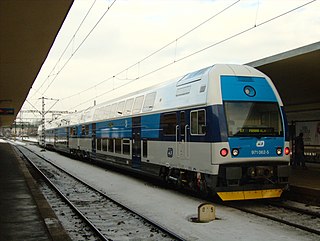In mathematics, especially group theory, the elements of any group may be partitioned into conjugacy classes; members of the same conjugacy class share many properties, and study of conjugacy classes of non-abelian groups reveals many important features of their structure. For an abelian group, each conjugacy class is a set containing one element.

NP-hardness, in computational complexity theory, is the defining property of a class of problems that are, informally, "at least as hard as the hardest problems in NP". A simple example of an NP-hard problem is the subset sum problem.
UN numbers are four-digit numbers that identify hazardous materials, and articles in the framework of international transport.
Some hazardous substances have their own UN numbers, while sometimes groups of chemicals or products with similar properties receive a common UN number. A chemical in its solid state may receive a different UN number than the liquid phase if their hazardous properties differ significantly; substances with different levels of purity may also receive different UN numbers.
Freon is a registered trademark of The Chemours Company, which uses it for a number of halocarbon products. They are stable, nonflammable, moderately toxic gases or liquids which have typically been used as refrigerants and as aerosol propellants. These include the chlorofluorocarbons (CFCs) that cause ozone depletion, and HCFC. Not all refrigerants of this type are labelled as "Freon" since Freon is a brand name for the refrigerants R-12, R-13B1, R-22, R-410A, R-502, and R-503 manufactured by The Chemours Company. The term "freon" is a common descriptor or proprietary eponym like "xerox" or "kleenex." It is commonly used when referring to any fluorocarbon refrigerants.
In programming languages and type theory, polymorphism is the provision of a single interface to entities of different types or the use of a single symbol to represent multiple different types.

In crystallography, the monoclinic crystal system is one of the 7 crystal systems. A crystal system is described by three vectors. In the monoclinic system, the crystal is described by vectors of unequal lengths, as in the orthorhombic system. They form a rectangular prism with a parallelogram as its base. Hence two vectors are perpendicular, while the third vector meets the other two at an angle other than 90°.
In crystallography, the orthorhombic crystal system is one of the 7 crystal systems. Orthorhombic lattices result from stretching a cubic lattice along two of its orthogonal pairs by two different factors, resulting in a rectangular prism with a rectangular base and height (c), such that a, b, and c are distinct. All three bases intersect at 90° angles, so the three lattice vectors remain mutually orthogonal.

In crystallography, the triclinic crystal system is one of the 7 crystal systems. A crystal system is described by three basis vectors. In the triclinic system, the crystal is described by vectors of unequal length, as in the orthorhombic system. In addition, the angles between these vectors must all be different and may include 90°.
Class (locomotive) refers to a group of locomotives built to a common design for a single railroad. Often members of a particular class had detail variations between individual examples, and these could lead to subclasses. Sometimes technical alterations move a locomotive from one class to another. Different railways had different systems, and sometimes one railway used different systems at different times and for different purposes, or applied those classifications inconsistently. Sometimes therefore it is not clear where one class begins and another ends. The result is a classic example of the Lumper splitter problem.
The term differential is used in calculus to refer to an infinitesimal change in some varying quantity. For example, if x is a variable, then a change in the value of x is often denoted Δx. The differential dx represents an infinitely small change in the variable x. The idea of an infinitely small or infinitely slow change is extremely useful intuitively, and there are a number of ways to make the notion mathematically precise.

The Networker is a family of trains which operate on the UK railway system. They were built in the late 1980s and early 1990s by British Rail Engineering Limited. The trains were built for the Network SouthEast sector of British Rail, which is where their name comes from. They are all multiple-unit trains.

Class 371, Class 381 and Class 471 were proposed electric multiple unit classes from the Networker family of trains intended to operate services in the south-east of England.
Algebra is one of the broad parts of mathematics, together with number theory, geometry and analysis. In its most general form, algebra is the study of mathematical symbols and the rules for manipulating these symbols; it is a unifying thread of almost all of mathematics. It includes everything from elementary equation solving to the study of abstractions such as groups, rings, and fields. The more basic parts of algebra are called elementary algebra; the more abstract parts are called abstract algebra or modern algebra. Elementary algebra is generally considered to be essential for any study of mathematics, science, or engineering, as well as such applications as medicine and economics. Abstract algebra is a major area in advanced mathematics, studied primarily by professional mathematicians.

The DRG Class ET 171 is a three-car electric multiple unit train built for the Hamburg S-Bahn.
German submarine U-471 was a Type VIIC U-boat built for Nazi Germany's Kriegsmarine for service during World War II.
She was laid down on 25 October 1941 by Deutsche Werke, Kiel as yard number 302, launched on 6 March 1943 and commissioned on 5 May 1943 under Oberleutnant zur See Friedrich Kloevekorn.

USS LST-471 was a United States Navy LST-1-class tank landing ship used in the Asiatic-Pacific Theater during World War II. As with many of her class, the ship was never named. Instead, she was referred to by her hull designation.
HMS Cooke (K471) was a British Captain-class frigate of the Royal Navy in commission during World War II. Originally constructed as the United States Navy Evarts-class destroyer escort USS Dempsey (DE-267), she served in the Royal Navy from 1943 to 1946.

The Ferrovie dello Stato Italiane Class 470 is a 0-10-0 steam locomotive.









